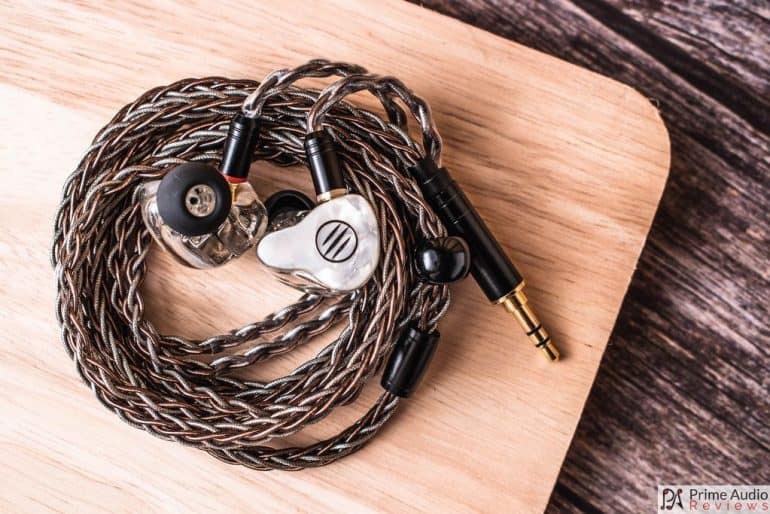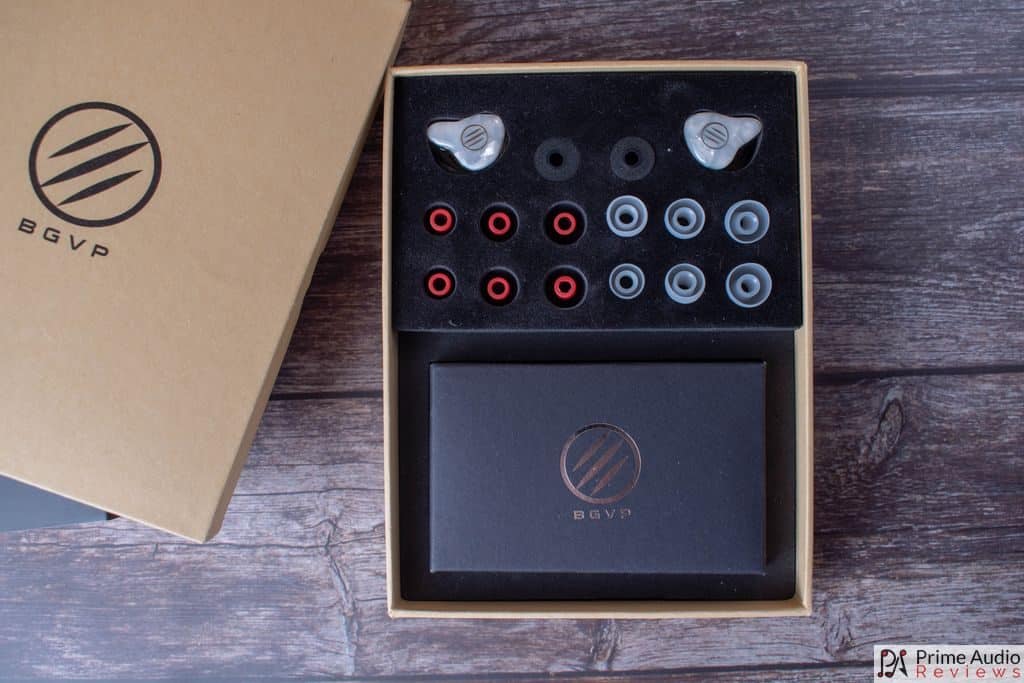BGVP is a Chinese earphone manufacturer that has gained significant popularity since they released their DMG and DM6 models in 2018. Now, they are back with another new product and today we review the BGVP DM7 in-ear monitors. The DM7 will be available on Drop (formerly known as Massdrop) from May 6th, 2019.
BGVP DM7 Drop launch link: https://drop.com/buy/bgvp-dm7-iem
It will soon also be available on the official Linsoul Audio page here: https://www.linsoul.com/
The DM7 has 6 drivers per side with a combination of Knowles and Sonion balanced armature drivers and a 4-way crossover. It is constructed using 3D printing technology and German medical-grade resin. Can it match the success of its predecessors?
All human actions have one or more of these seven causes: chance, nature, compulsions, habit, reason, passion, desire.
Aristotle
This sample was provided for the purpose of an honest review. All observations and opinions here are my own based on my experience with the product.
BGVP DM7 Review
- Expansive soundstage with strong imaging
- Resolving and transparent midrange
- Good bass control
- Fantastic cable
- Treble timbre
- Male vocals a little dry
Package and Accessories
The DM7 comes with a black cardboard sleeve. There is an outline illustration of the earpieces on the front along with a Hi-Res Audio label. Over on the back is a list of specifications and a frequency response graph.
The box itself is an unassuming brown box with the BGVP logo on the front. Inside are the earphones, presented in a black foam insert along with various eartips. Below that there’s another small box which holds the rest of the accessories. Let’s check out the list of contents.
- BGVP DM7 earphones
- Detachable MMCX cable
- Velcro cable tie
- IEM cleaning tool
- 1 pair of foam eartips
- 3 pairs of white silicone eartips
- 3 pairs of grey silicone eartips
- 3 pairs of black silicone eartips
- Instructions/user guide
The variety of eartips is nice to see and the grey tips in particular, feel like they’re good quality ones. As I expected though, out of the 10 pairs of eartips included an entire 0 of them fit in my ears because they’re all too small. Come on Fearless, what is this BS?
Similar to the DMG, there is no storage case or pouch included which seems kinda scant for a $300 earphone. When it comes to the cable though…hmm, so tasty! I’ll cover the cable more in the build section later.

Build Quality and Design
The DM7 housings are a semi-custom style that is becoming more and more popular in recent times. My review unit has pearly white faceplates with a silver BGVP logo. There will be additional colours available at launch but we don’t know what they are yet.
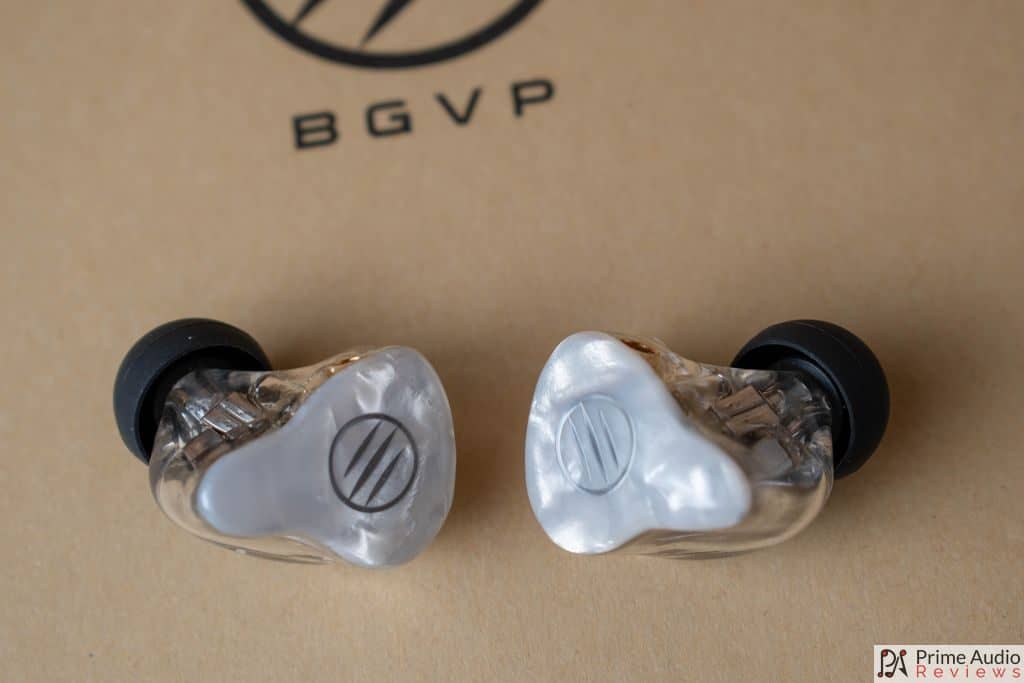
Drivers used are the Knowles SWFK-31376, Knowles ED-29689, Sonion 33AP007 and Knowles CI-22955. These work in conjunction with a 4-way passive crossover.
The clear, transparent shells are made from German medical-grade resin and allow a clear view of the balanced armature drivers within. As is fairly common with multi-BA IEMs, there are no vents present on the housings.
Where the faceplates join the shells, there is no visible seam or imperfections. On the end of the nozzles is a small lip to hold eartips on more securely. What’s interesting about these nozzles are the 4 bores, which aid in the instrument separation. Overall the build quality looks good, something which is becoming more common every day with the growing number of brands adopting 3D printing.

Comfort and Noise Isolation
I find the DM7 earpieces to be quite comfortable and can easily wear them during long listening sessions. The shells are fairly lightweight and smooth all over, plus there are no sharp edges present anywhere and the nozzles have an average size diameter.
Noise isolation very good with the right eartips and not too far from what you can achieve with a custom set. Noise leak is minimal.
Cable
Here’s where things get really interesting. The supplied cable uses the same MMCX components as Shure IEMs which supposedly remain durable even after 5000 unplugs. The 8-core cable is a 50% mix of single-crystal copper and silver-plated copper and it is absolutely gorgeous.
On the exterior, half of the strands are a sparkling dark grey colour and the other half are a dark brown. The TPU sheaths are extremely pliable and soft to the touch, resulting in a very flexible cable that drapes beautifully and has little microphonics.
The black aluminium MMCX connector housings are colour coded and join the supple pre-formed ear guides. There’s a spherical plastic chin slider which sits above the small, black, cylindrical Y-split. The cable terminates in a straight, black, aluminium 3.5 mm plug with solid strain relief.
This is hands-down one of the nicest stock cables I’ve ever seen included with a UIEM and it adds a lot to the sense of the overall package’s value.

Sound
Gear used for testing includes the Soundaware M2Pro and Shanling M5s as portable sources. On the desktop, I connected the DM7 to my Arcam irDAC-II and fed it FLAC files via MusicBee on my PC. Extra amplification isn’t really necessary with the DM7 but I did find the audio quality to scale quite well with a better source. For some reason, I wasn’t really feeling it with the FiiO K3 DAC but once I switched to the Arcam it sounded beefier and sweeter.
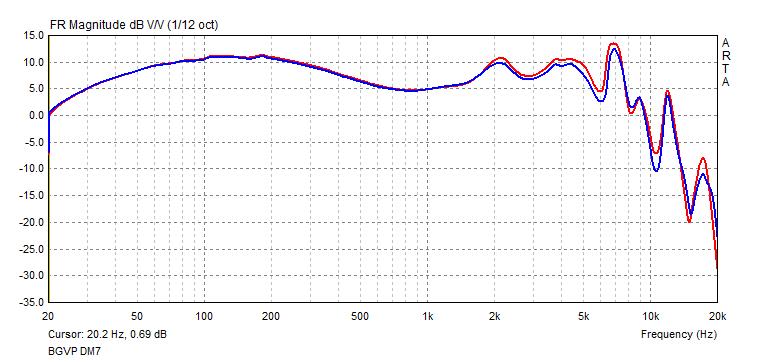
Bass
The DM7’s bass inherits a lot of the usual balanced armature characteristics i.e. good speed and control. It puts more emphasis on the mid-bass than sub-bass; another signature of BA drivers. DM7’s bass extension is good and I can hear it below 20Hz but it’s conservative in quantity and is heard more than felt.
A medium speed attack and fast decay give the mid-bass ample body and impact but it’s still fairly moderate in quantity which is necessary to achieve its resolving midrange and clean stage. However, it does carry enough weight to add some fun and groove to the sound. Throw on Watsky’s “Exquisite Corpse” and I sincerely doubt you’ll be left wanting more or better quality bass.
Mids
The midrange has a fairly neutral but natural tuning with a good amount of clarity. Fast transients and a minimum of mid-bass bleed keep the mids clear and improve transparency. In relation to the bass and treble, the midrange is reasonably forward but not thick which helps maintain the overall resolution.
Vocals have good density and populate the centre stage. It’s as though the singer stands in a spotlight, surrounded by the rest of the instruments that linger in blackness on the periphery of the stage. This contributes to the DM7’s holographic presentation. It’s not that the vocals are pushed unnaturally forward, just that their position is clearly defined.
Female vocals come to the fore more so than male voices. In Anneke Van Giersbergen’s “Agua de Annique” her vocals are the standout feature and have good articulation and realistic tone while the guitars and drums reside to the sides and rear of the singer.
Treble
The peak at 7kHz adds definition and clarity and sharpness to percussion. However, in conjunction with the upper midrange boost (3.5-5kHz), things sometimes sound a touch brittle. It doesn’t add asperity but some cymbals and percussion sound tizzy. Additionally, treble notes are rather thin and lack sparkle.
The treble isn’t harsh but tends to sound a little artificial, most notably with crash cymbals. It’s clear that BGVP were aiming for tone over timbre and for the most part, they got it right but at the cost of some accuracy. Fortunately, the DM7 does avoid sibilance and overt brightness.
Soundstage
One of the DM7’s bigger strengths is its soundstage. It’s a little wider than it is deep and while it isn’t the most expansive stage it does space instruments apart nicely. The imaging and layering are above average thanks to the DM7’s clean, dark background. Within its modest dimensions, the stability of the stage and holographic nature stand out alongside its targeted positioning.

Comparisons
TSMR-3 Pro (switch config 100)

The TSMR-3 Pro (review here) shares similarities to the DM7’s tonality. Both IEMs are fairly evenly spread from bass to treble but the TSMR-3 Pro has more note density. The quantity of bass and sub-bass is comparable between the two but the DM7 carries a little more weight.
The TSMR-3’s midrange is more forward and vocals are more intimate. The DM7’s mids are more diffuse and airier, creating more distance between vocals and the listener. In the treble, the TSMR-3 Pro is more even and the notes aren’t as thin, making it sound more natural.
Detail retrieval is close between the two but the DM7 has superior separation and layering. The DM7 has a larger, airier stage with more precise imaging.
Fearless S6RUI

The S6RUI has beefier sub-bass and mid-bass making its overall tonality warmer. Both have a medium attack speed and the DM7 has a slightly faster bass decay. The lower midrange is a little thicker on the S6RUI, making male vocals sound richer and adding body, while the DM7 is a little drier.
The upper midrange is extremely close between the two IEMs right up until 7kHz where the DM7 has a large peak. The S6RUI has a more even treble which to my ears sounds more natural. Between 9-10.5kHz the S6RUI is less attenuated so that it ends up sounding just as airy as the DM7 despite its warmer tone.
DM7’s soundstage has larger dimensions which come mostly from its extra width, as both have a similar reach in depth. Resolution and layering are comparable and above average on both.
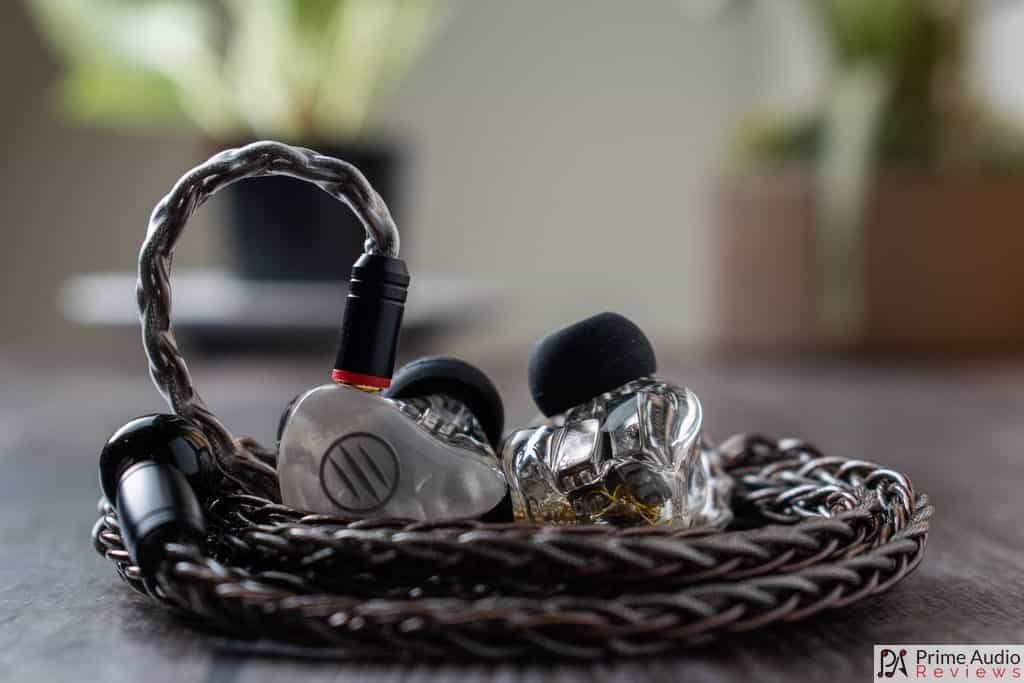
Conclusion
The BGVP DM7 showcases impressive prowess, particularly in its soundstage and layering. Although I never got to hear the DM6, I can say that this is a big leap forward from the BGVP DMG. This is an IEM that can deliver on technical terms but still has an enjoyable tone with a good mixture of resolution, speed and fun all bundled together.
There aren’t a lot of IEMs in its price range that can compete with the DM7 on a technical level and that in itself is worth a recommendation. BGVP have proven beyond doubt that they’re not a one-horse manufacturer and I’ll be eagerly awaiting their future releases.
Specifications
- Driver configuration: 6 BA (Knowles + Sonion)
- Sensitivity: 113dB
- Impedance 13.5Ω
- Rated Power: 7mW


